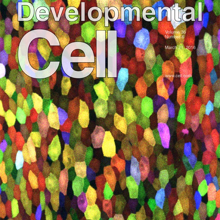Filter
Associated Lab
Publication Date
- Remove March 21, 2016 filter March 21, 2016
- Remove March 2016 filter March 2016
- Remove 2016 filter 2016
Type of Publication
3 Publications
Showing 1-3 of 3 resultsThere is a continuing need for driver strains to enable cell type-specific manipulation in the nervous system. Each cell type expresses a unique set of genes, and recapitulating expression of marker genes by BAC transgenesis or knock-in has generated useful transgenic mouse lines. However since genes are often expressed in many cell types, many of these lines have relatively broad expression patterns. We report an alternative transgenic approach capturing distal enhancers for more focused expression. We identified an enhancer trap probe often producing restricted reporter expression and developed efficient enhancer trap screening with the PiggyBac transposon. We established more than 200 lines and found many lines that label small subsets of neurons in brain substructures, including known and novel cell types. Images and other information about each line are available online (enhancertrap.bio.brandeis.edu).
Animal development is a complex and dynamic process orchestrated by exquisitely timed cell lineage commitment, divisions, migration, and morphological changes at the single-cell level. In the past decade, extensive genetic, stem cell, and genomic studies provided crucial insights into molecular underpinnings and the functional importance of genetic pathways governing various cellular differentiation processes. However, it is still largely unknown how the precise coordination of these pathways is achieved at the whole-organism level and how the highly regulated spatiotemporal choreography of development is established in turn. Here, we discuss the latest technological advances in imaging and single-cell genomics that hold great promise for advancing our understanding of this intricate process. We propose an integrated approach that combines such methods to quantitatively decipher in vivo cellular dynamic behaviors and their underlying molecular mechanisms at the systems level with single-cell, single-molecule resolution.
Vertebrates are remarkable for their ability to select and execute goal-directed actions: motor skills critical for thriving in complex, competitive environments. A key aspect of a motor skill is the ability to execute its component movements over a range of speeds, amplitudes and frequencies (vigor). Recent work has indicated that a subcortical circuit, the basal ganglia, is a critical determinant of movement vigor in rodents and primates. We propose that the basal ganglia evolved from a circuit that in lower vertebrates and some mammals is sufficient to directly command simple or stereotyped movements to one that indirectly controls the vigor of goal-directed movements. The implications of a dual role of the basal ganglia in the control of vigor and response to reward are also discussed.

